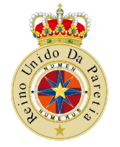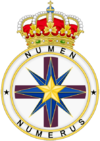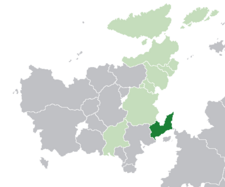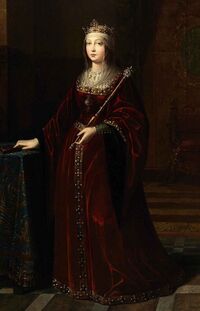Paretia
United Kingdom of Paretia Reino Unido Da Paretia (Luzelese) Reino Unido De Paretia (Meiran) | |
|---|---|
Motto: Força na Fraternidade! "Strength in Brotherhood!"
"" | |
Anthem: Marchamos Juntos! | |
Paretia in Euclea(Green) and the Euclean Community(Light Green). | |
| Capital and Largest City | |
| Official languages | Luzelese Tosutonian |
| Demonym(s) | Paretian |
| Government | Federal Parliamentary Constitutional Monarchy |
• King | Erasmo |
• Premier | Isilda Cintura |
| Legislature | Assembleia Nacional |
| Establishment | |
| 1541 | |
| Area | |
• Total | 240,886 km2 (93,007 sq mi) |
• Water (%) | 7.02 |
| Population | |
• 2016 census | |
| GDP (PPP) | 2020 estimate |
• Total | |
• Per capita | $26,345.11 |
| GDP (nominal) | 2020 estimate |
• Total | |
• Per capita | $23,715.79 |
| Gini (2020) | 36.9 medium |
| HDI (2020) | 0.791 high |
| Currency | Euclo (EUC (€)) |
| Date format | dd.mm.yyyy |
| Driving side | right |
| Calling code | +109 |
| Internet TLD | .pa |
Paretia (Luzelese: Paretia), officially the United Kingdom of Paretia (Luzelese: Reino Unido Da Paretia; Meiran: Reino Unido De Paretia; Esmeralan: Reino Unido De Paretia; Tosutonian: Regne Unit d'Paretya), is a Federal Parliamentary Constitutional Monarchy situated in eastern Euclea, located on the Paretian Peninsula. It is shares land borders with two nations, the northwest by Gaullica, and to the southwest by Etruria. It also shares maritime borders with three other nations, to the east by Montecara and Tsabara, and to the southeast by Emessa. Paretia has a population of 31.2 Million people. The Country is a union of four kingdoms, Meira, Tosutonia, and Esmeral and Luzela, the latter being the largest and most powerful kingdom of the four. Each of these kingdoms speak a separate language and have different, but still closely intertwined cultures.
The location of Paretia on the western side of Aurean Straits has made it a place of significance throughout much of human history. For much of it's earliest history, the peninsula was inhabited by Tenic cultures, the largest was known as the Eastrian culture. By the 7th century BC, the Piraeans had begun to set up colonial cities across the peninsula. These cities would eventually grow due to the trade that was constantly going through the region. Soon the Solarian Empire would conquer the peninsula, and the empire saw Paretia with high importance and began to invest heavily into the region. Cities were founded by the empire, the largest being Preceus, which today is the capitol, Precea. After the fall of the Empire, it's successor the Verliquoian Empire would take over the peninsula. During this era the Tagamic Invasions from Coius would land on the peninsula and Paretia became the focal point of the conflicts. These hordes would sack and destroy many cities in the peninsula. Eventually the horde was defeated by the Verliquoian hold on the peninsula was severely weakened. Various kingdoms and principalities would form across the peninsula, these kingdoms each had different unique languages such as Luzelese, Meiran, Tosutonian, and Esmeralan. The most notable of these kingdoms was Luzela, located on the eastern half of the peninsula.
By the 1400's Luzela had made itself far richer and more powerful than it's neighbors. In the early 16th century, the Queen of Luzela Marta I, would lead her armies to conquer the peninsula and install puppet kingdoms ruled by the same royal house as Luzela, House Azulas. Martia I would proclaim a United Paretian Empire or the United Kingdom of Paretia. The various Kingdoms would begin to colonize in Asteria Superior and Asteria Inferior, these colonies would be ruled by the separate kingdoms and had different official languages. In 1688 King Marcellus II would establish create the first Assembleia Nacional. In the 18th century many all of the colonies would gain independence. In 1833, King Xavier IV would join a movement to create a constitution for the nation.
In 1913, the Great Collapse would destroy the economy and the government was extremely unpopular, political leader Xulio Sousa would be elected Premier and began to implement popualar liberal policies to help the economy, however the pro-entente pro-functionalist monarchy ruled by Ana II would allow and support a takeover by the fascist Solarists led by Carlito Palmyro. Sousa would be sent to exile to Etruria and begin a separate government, supporters of Sousa would begin rebellions and resistance in Paretia. The Great War began with the Solarists allying with Gaullica. Eventually the Grand Alliance and the pro-Sousa rebels would defeat the Entente and the United Paretian Republic would be founded by Sousa, however he would die of age shortly after and his successors would be unable to rebuild the country. The Etrurian Revolutionary Republic would conquer Paretia in the Solarian War. The CN would eventually liberate the country. The instability and separatism after this war would lead to a coup by pro-monarchists in 1946. The monarchy and the United Kingdom was restored by this.
Paretia would join the Euclean Community alongside Amathia in 1995. Today the country is ruled by King Erasmo and the government is lead by Isilda Cintura, who is the head of a moderate to center-right coalition in the Assembleia Nacional. Paretia is currently member of the CN, the EC, the Aurean Forum, and the Association of Solarian Nations.
Etymology
The word "Paretia" comes from the word Parietem, the Solarian word for "Wall". The Solarians named the peninsula when they conquered it. The name derives from the original Piraean name for the peninsula, Empodio, which meant wall in Piraean. The name comes from the idea that the peninsula was a wall that divided the northern oceans to the southern oceans of Euclea. Most Solarian documents and maps labelled the peninsula as either Parietia or Parietium. Other names for the region include West Aurea and Great Luzela.
History
Prehistory
Antiquity
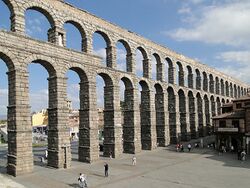
Middle Ages
Renaissance and Unification
Early Modern
19th Century Paretia

Great War



